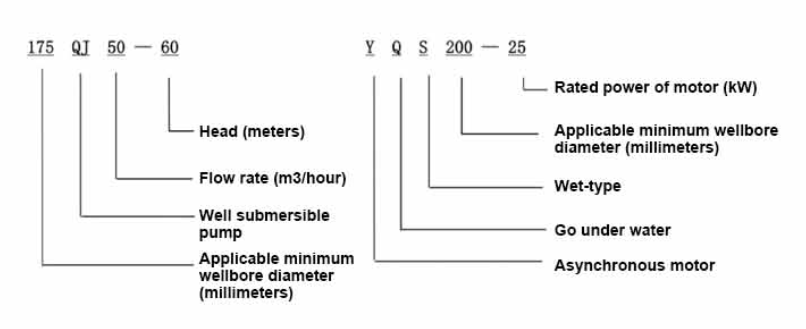Nov . 12, 2024 01:44 Back to list
how to install deep well submersible pump
How to Install a Deep Well Submersible Pump
Installing a deep well submersible pump can seem daunting, but with the right tools and preparation, it can be a manageable task. A submersible pump is designed to be submerged in water and is used for extracting water from deep wells, making it an essential component for many agricultural, residential, and industrial applications. This guide provides you with a detailed step-by-step process to install a deep well submersible pump effectively.
Tools and Materials Needed
Before you start the installation process, ensure you have the following tools and materials
- Deep well submersible pump - Pump control box - Pipe wrenches - Adjustable wrenches - Teflon tape - PVC or steel pipe (depending on your well type) - Rope or puller - Electrical wire and connectors - Safety goggles and gloves
Step 1 Preparing Your Well
1. Check Local Regulations Before any installation, check your local regulations regarding well systems. You may need a permit depending on your location.
2. Gather Measurements Measure the depth of your well, as well as the diameter of the casing. This information is essential for selecting the correct pump size.
3. Select the Right Pump Choose a pump that matches your well's depth and intended flow rate. Ensure the pump is suitable for potable water if it’s for home use.
Step 2 Assemble the Components
1. Inspect the Pump and Accessories Unbox your new pump and inspect it for any damages or missing parts.
2. Attach the Pump to the Pipe Use Teflon tape to seal the threads on the pipe connections. Carefully attach the pump to the discharge pipe, making sure it's secure.
3. Connect the Electrical Components Follow the manufacturer's instructions to connect the electrical wires from the pump to the control box. Ensure all connections are watertight and secure.
Step 3 Lowering the Pump into the Well
how to install deep well submersible pump

1. Prepare the Pulling System Use a sturdy rope or a puller to lower the pump into the well. Ensure your rope can handle the weight of the pump.
2. Lowering the Pump Steadily lower the pump into the well. Keep an eye on the connection between the discharge pipe and the pump to ensure it doesn’t come loose.
3. Positioning the Pump Make sure the pump is positioned correctly at the desired depth. This depth should typically be above the well's bottom to avoid sand and sediment being drawn into the pump.
Step 4 Connecting the System
1. Secure the Discharge Pipe Once the pump is in position, secure the discharge pipe to the well casing using brackets or clamps. This will prevent movement and protect the piping from potential damage.
2. Connect to the Pressure Tank If your system uses a pressure tank, connect the discharge pipe to the tank following the manufacturer’s instructions. Make sure all connections are tight and leak-free.
3. Electrical Connection Connect the pump to the power supply. Ensure all wiring follows safety codes and is water-resistant. It’s advisable to consult a licensed electrician if you're unsure about handling electrical components.
Step 5 Testing the System
1. Check for Leaks After the installation, turn on the pump and check all connections for leaks. Look closely at the fittings to ensure they remain secure under pressure.
2. Test the Pump Operation Run the pump for a few minutes to ensure it operates smoothly. Listen for any unusual noises that might indicate a problem, such as cavitation or vibrations.
3. Water Quality Test If the pump is intended for drinking water, conduct a water quality test to ensure that it meets health standards.
Conclusion
Installing a deep well submersible pump involves careful planning, proper tools, and a bit of technical knowledge. By following these steps, you can ensure a successful installation that provides reliable water supply for your needs. Always prioritize safety, and when in doubt, consult professionals for assistance. With your pump properly installed, you can enjoy a steady flow of water from your well for years to come.
-
Submersible Water Pump: The Efficient 'Power Pioneer' of the Underwater World
NewsJul.01,2025
-
Submersible Pond Pump: The Hidden Guardian of Water Landscape Ecology
NewsJul.01,2025
-
Stainless Well Pump: A Reliable and Durable Pumping Main Force
NewsJul.01,2025
-
Stainless Steel Submersible Pump: An Efficient and Versatile Tool for Underwater Operations
NewsJul.01,2025
-
Deep Well Submersible Pump: An Efficient 'Sucker' of Groundwater Sources
NewsJul.01,2025
-
Deep Water Well Pump: An Efficient 'Sucker' of Groundwater Sources
NewsJul.01,2025
-
 Submersible Water Pump: The Efficient 'Power Pioneer' of the Underwater WorldIn the field of hydraulic equipment, the Submersible Water Pump has become the core equipment for underwater operations and water resource transportation due to its unique design and excellent performance.Detail
Submersible Water Pump: The Efficient 'Power Pioneer' of the Underwater WorldIn the field of hydraulic equipment, the Submersible Water Pump has become the core equipment for underwater operations and water resource transportation due to its unique design and excellent performance.Detail -
 Submersible Pond Pump: The Hidden Guardian of Water Landscape EcologyIn courtyard landscapes, ecological ponds, and even small-scale water conservancy projects, there is a silent yet indispensable equipment - the Submersible Pond Pump.Detail
Submersible Pond Pump: The Hidden Guardian of Water Landscape EcologyIn courtyard landscapes, ecological ponds, and even small-scale water conservancy projects, there is a silent yet indispensable equipment - the Submersible Pond Pump.Detail -
 Stainless Well Pump: A Reliable and Durable Pumping Main ForceIn the field of water resource transportation, Stainless Well Pump has become the core equipment for various pumping scenarios with its excellent performance and reliable quality.Detail
Stainless Well Pump: A Reliable and Durable Pumping Main ForceIn the field of water resource transportation, Stainless Well Pump has become the core equipment for various pumping scenarios with its excellent performance and reliable quality.Detail
